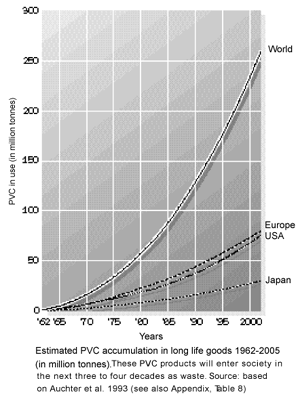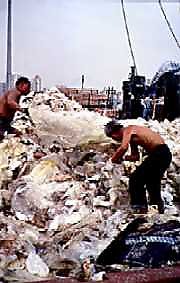A chlorine-eating bacterium has been discovered that could be used to clean up land and water contaminated with decades’ worth of chlorinated organic compounds.
Chlorine-containing pollutants from previous decades of industrial activity have led to serious contamination of groundwater. Polyvinyl chloride (PVC) production and related activities have led to annual underground releases of 137 tonnes of 1,2-dichloroethane in the USA from 1988-1999. 1,2-dichloroethane is a suspected human carcinogen as well as a threat to wildlife and has an environmental half-life of some fifty years.

Stefaan de Wildeman
Until now, there has been no detoxification technology available that could remove this compound from the reducing conditions of groundwater. But, thanks to Belgian researchers who have enlisted a new agent, it might soon be possible to clean up contaminated water without recourse to chemical means.
Stefaan de Wildeman of Ghent University and his colleagues began looking for a bacterium that could metabolise chloroethane rapidly, completely, and reductively. The by-product would be a dechlorinated hydrocarbon and hydrogen chloride. They also hoped that the same microbe might not be averse to digesting other chlorinated alkanes such as 1,2-dichloropropane. Previous researchers had found that certain bacteria could dechlorinate some organochlorine compounds but only with chemical additives present and then only very slowly. The unfortunate by-product of the process was the toxic material vinyl chloride. So bioremediation with these microbes would do more harm than good.

Greenpeace representation of PVC entering environment as waste over the coming decades
The Ghent researchers had pinned their hopes on finding a dechlorinating microbe that would be much faster and more controllable and most importantly produce only innocuous by-products. They began to look at soil bacteria found in the air-free conditions of wet soil at a depth of one metre that had been polluted with dichloroethane for some thirty years. It was a struggle to isolate just such a bacterium but with a bit of biological expertise and a little luck the team obtained a growing culture of a dechlorinating bacterium, which was designated strain DCA1.

Accumulating PVC waste
The researchers say that strain DCA1 respires the pollutant 1,2-DCA much like animals respire oxygen. Energy is released in the process that allows the organism to live and to reproduce. Physiological, morphological and phylogenetic characterization of DCA1 suggested that it is a new genus of Desulfitobacterium.
The team has offered a full name of Desulfitobacterium dichloroeliminans strain DCA1. As well as defining the species, the team has defined the growth medium required to cultivate what they say is the first nutritionally defined bacterial isolate that completely and rapidly dechlorinates some chlorinated solvents. They say that the growth medium allows them to mass produce the microbe by fermentation.
Further studies have also revealed the specific and stereoselective dehalogenating enzyme present in strain DCA1. Most importantly, from the point of view of bioremediation is that unlike previously known dehalogenating anaerobes, DCA1 does not convert nor produce any unsaturated chlorosubstrates.
Injecting culture solution of strain DCA1 into contaminated groundwater could provide an inexpensive but nevertheless efficient remediation strategy. Its potency has already been demonstrated on groundwater samples in the laboratory while ongoing tests have also showed it to be effective in soil systems under experimental conditions. Degradation is complete and almost no pollutant remains, say the researchers, all within a few days or weeks.